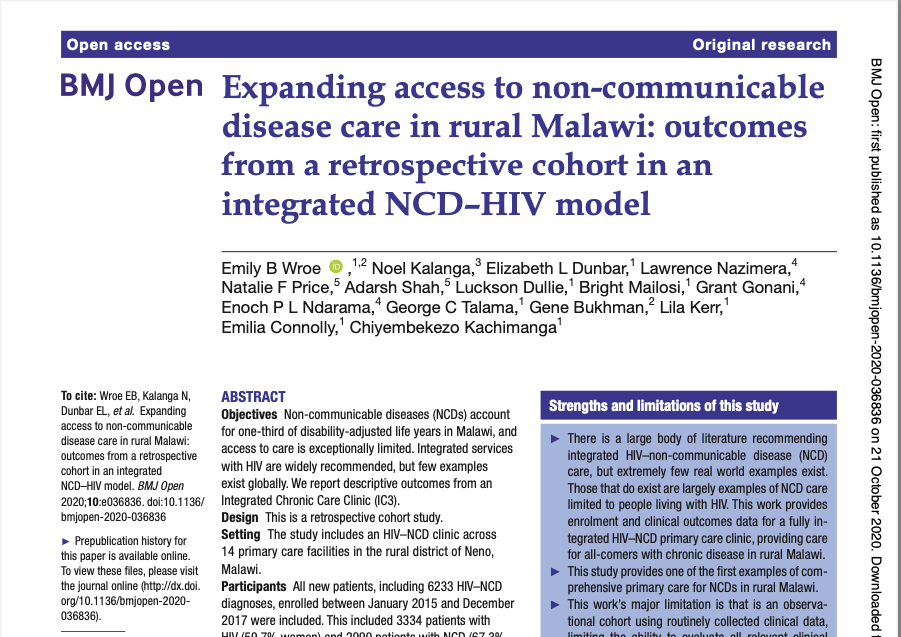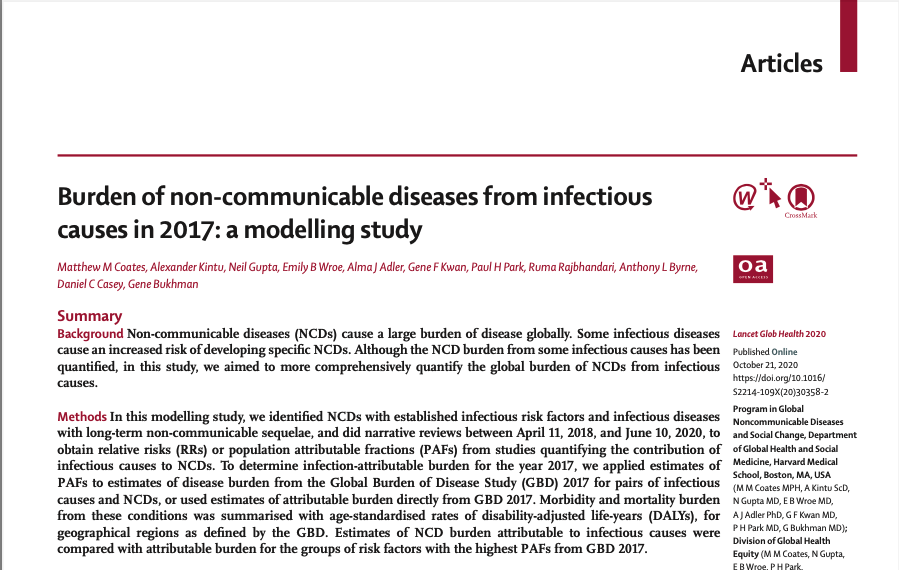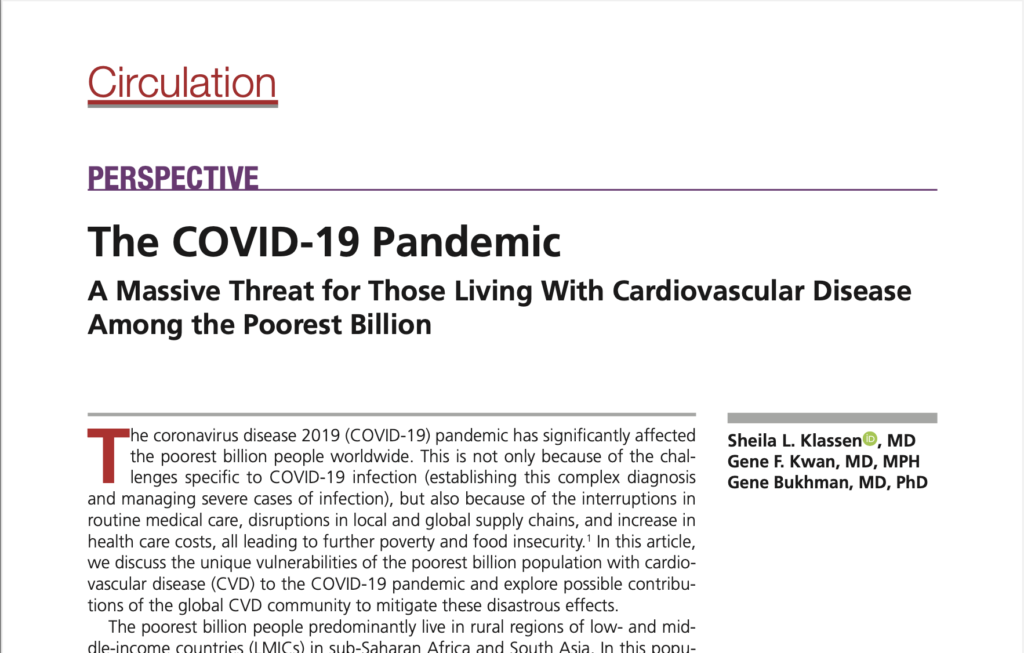Trujillo, C., Ferrari, G., Ngoga, G., Mclaughlin, A., Davies, J., Tucker, A., Randolph, C., Cook, R., Park, P. H., Bukhman, G., Adler, A. J. & Pierre, J
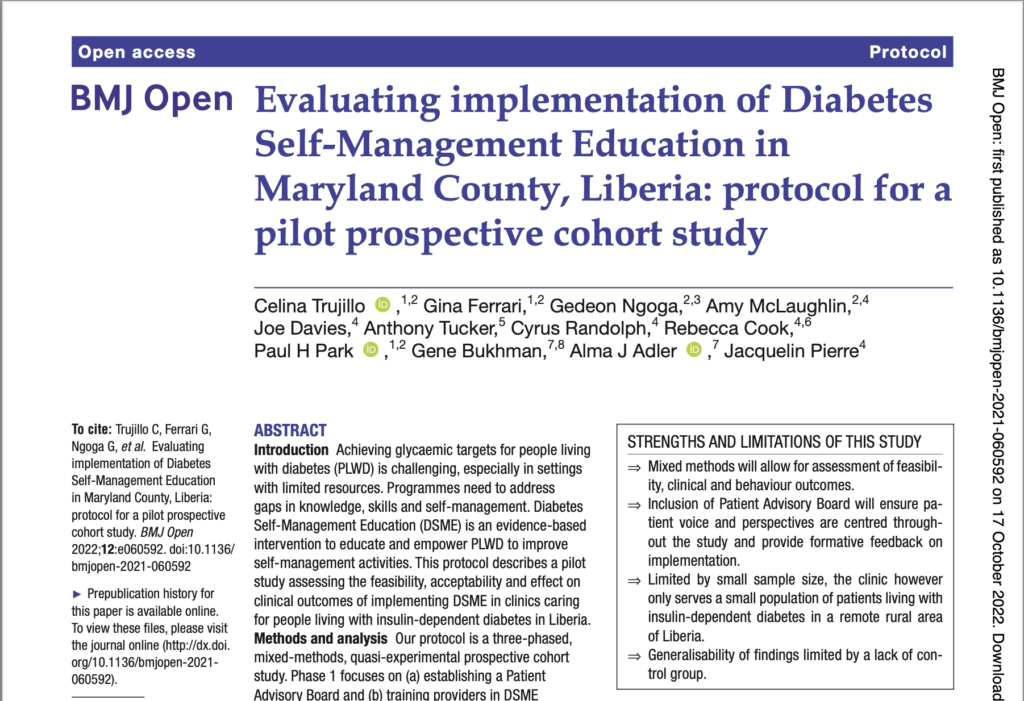 Achieving glycaemic targets for people living with diabetes (PLWD) is challenging, especially in settings with limited resources. Programmes need to addressgaps in knowledge, skills and self-management. Diabetes Self-Management Education (DSME) is an evidence-based intervention to educate and empower PLWD to improve self-management activities. This protocol describes a pilot study assessing the feasibility, acceptability and effect on clinical outcomes of implementing DSME in clinics caring for people living with insulin-dependent diabetes in Liberia.
Achieving glycaemic targets for people living with diabetes (PLWD) is challenging, especially in settings with limited resources. Programmes need to addressgaps in knowledge, skills and self-management. Diabetes Self-Management Education (DSME) is an evidence-based intervention to educate and empower PLWD to improve self-management activities. This protocol describes a pilot study assessing the feasibility, acceptability and effect on clinical outcomes of implementing DSME in clinics caring for people living with insulin-dependent diabetes in Liberia.
Adler, A. J., Ruderman, T., Valeta, F., Drown, L., Trujillo, C., Ferrari, G., Msekandiana, A., Wroe, E., Kachimanga, C., Bukhman, G. & Park, P. H.
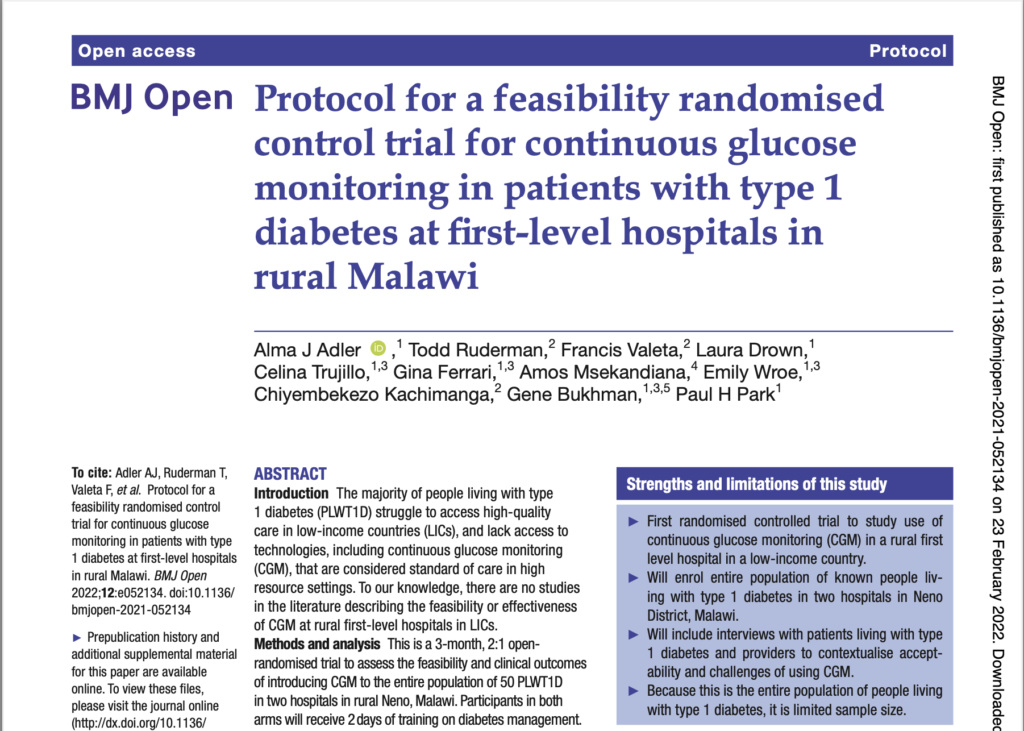
The majority of people living with type 1 diabetes (PLWT1D) struggle to access high-quality
care in low-income countries (LICs), and lack access to technologies, including continuous glucose monitoring (CGM), that are considered standard of care in high resource settings. To our knowledge, there are no studies in the literature describing the feasibility or effectiveness of CGM at rural first-level hospitals in LICs.This is a 3-month, 2:1open-randomised trial to assess the feasibility and clinical outcomes of introducing CGM to the entire population of 50 PLWT1D in two hospitals in rural Neno, Malawi.





